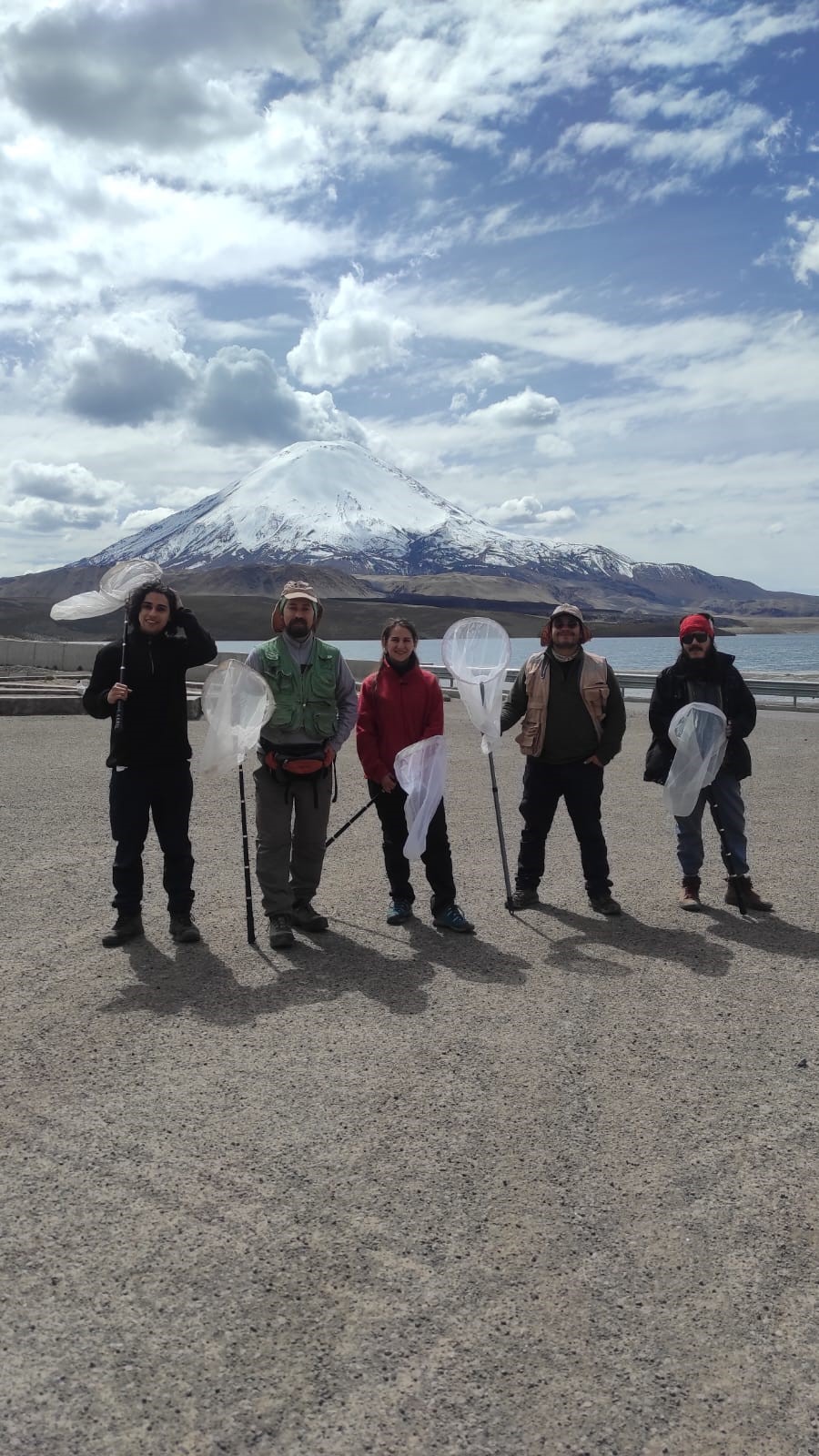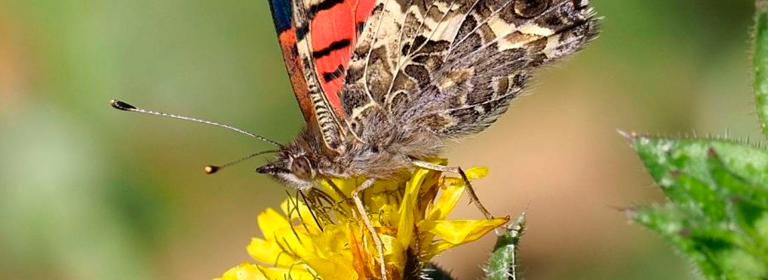Its migratory pattern is a set of heroic feats for an insect. A researcher at the Universidad Católica del Maule seeks answers to the enigmatic migration of the butterfly best known to Chileans.

It has a medium size, but it is tiny at the end. No one would think that a butterfly with a vulnerable appearance could fly back and forth between Chile and Venezuela, facing predators and intense temperatures. Her name is «Vanessa carye» and she is fragile only in appearance.
«The butterfly travels through very inhospitable and cold places, up to 20 degrees below zero, through the Andes Mountains. If it stops, it freezes, because we believe it has no antifreeze proteins,» said Hugo Benítez, Ph.D. in Evolutionary Biology, who studies the also called «Evening Butterfly», as part of a research on the biodiversity of the Altiplano and the adaptation patterns of animals in extreme environments.
«It can reach an altitude of 5,200 meters, at an unimaginable speed. We have seen it flying against the wind at perhaps more than 80 kilometers per hour. Why does it have this migratory capacity and how does it do it? We believe that the answers are in its genes and in fact there are clues in its evolutionary history,» emphasized Benítez, director of UCM’s Centro de Investigación de Estudios Avanzados del Maule.
His interest in Vanessa carye is not new. From his Laboratory of Ecology and Evolutionary Morphometry at the Universidad Católica del Maule, the scientist has been scrutinizing the evolutionary history of the Altiplano for four years, with the support of FONDECYT and two large agencies where the researcher is part of: the Instituto Milenio de Biodiversidad Antártica y Subantártica (BASE) and the Centro Basal Internacional Cabo de Hornos (CHIC).
«In the last expedition, we studied two very particular groups of insects, the Vanessa carye, highly migratory, and the Itylos titicaca, with reduced mobility. It was fascinating to see that animals with very different lifestyles can live in the same environment. One that can migrate from Venezuela to Tierra del Fuego and the other, which barely moves a few meters within the Andean wetlands that allow it to live», said the academic with respect to the expedition that included work sites in Lake Chungará and the Surire Salt Flat in the Arica y Parinacota Region.
Solitary Migrant
The afternoon butterfly, which owes its nickname to its habit of sunbathing at dusk perched on the edge of roads and gardens, not only travels a long distance. Its journey also constitutes an individual event.
«Its travel routes are solitary, and that is a unique aspect in nature because the monarch butterfly, for example, migrates in large groups. We think and continue studying to confirm that the Vanessa carye has a migratory status with two routes in Chile: the Andes and the coast. If we manage to determine that it is really migrating, it would be the most extensive butterfly migration in the world,» said the academic, who participated in a project that located the origin of the insect in the planet’s timeline.
«We elucidate the origin of butterflies was about 100 million years ago and that they laid their eggs in leguminous plants. Some time ago, it was said that butterflies were connected to flowering plants, which appeared 300 million years ago, but based on the research carried out by our international consortium of more than 28 countries, we realized that they did not, that they appeared 200 million years later, because before that there were other insects that occupied the environment, such as flies that pollinate flowers, dragonflies and bees,» Benítez said.
The researcher presented these findings, also published in the prestigious British journal «Nature Ecology and Evolution» at the VI Zoology Congress, recently organized by the University of Córdoba and the Colombian Zoology Association.













